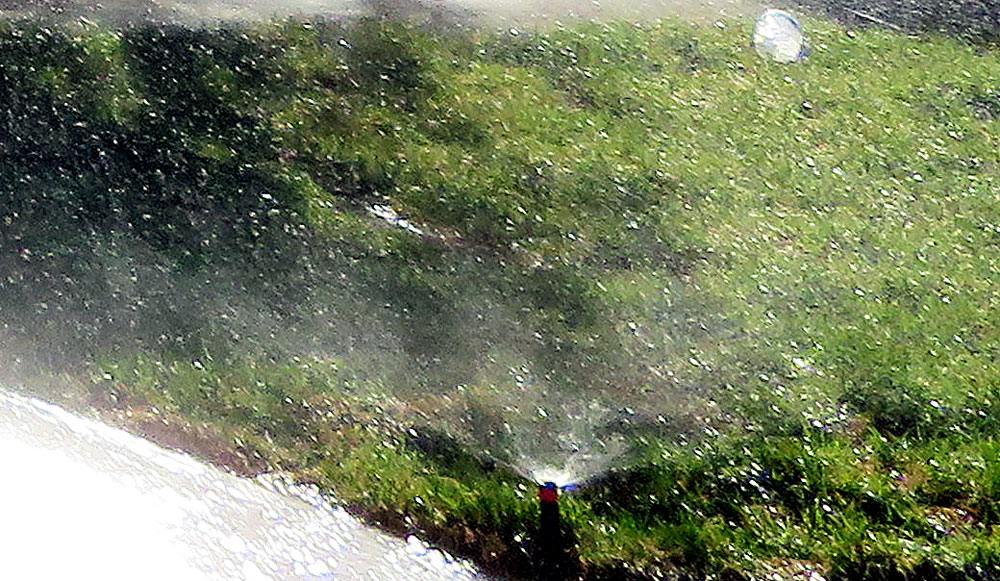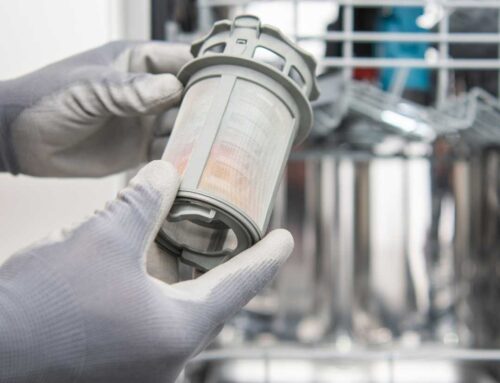 With a winter that was dryer than usual, the state of Utah is in moderate to extreme drought conditions, prompting the governor to already declare a state of emergency. Saving water is always important, but it will be especially so this year. Want to do your part? Here are 12 tips for saving water in your Utah yard.
With a winter that was dryer than usual, the state of Utah is in moderate to extreme drought conditions, prompting the governor to already declare a state of emergency. Saving water is always important, but it will be especially so this year. Want to do your part? Here are 12 tips for saving water in your Utah yard.
Grow Native Plants
Native plants have many advantages, including being able to adapt to Utah’s changing climate and being much hardier and much easier to keep alive and flourishing. You’ll spend less time watering, fertilizing, and dealing with pests versus non-native plants. Salt Lake County has many native options for trees, shrubs, grasses, and wildflowers. You can find a list of native plants on Salt Lake County’s Watershed Planning and Restoration page.
Consider Xeriscaping
In line with using native plants is xeriscaping or localscaping. With xeriscaping, more water-reliant landscaping, such as grass, is replaced by native and drought-tolerant plants and hardscape. While many think xeriscaping means no lawn, you don’t have to go 100 percent lawn free. Instead plan carefully and use grass where it will be most beneficial to you and your family, then use the hardscape and native and drought-tolerant plants everywhere else. There are several resources in the Salt Lake Valley that can help you with your xeriscaping/localscaping, including at Red Butte Garden and Jordan Valley Water Conservancy District.
Through the Utah Water Savers program, you could even be eligible for cash rewards for creating a Localscape in your yard or even just changing your park strip from grass to a water-efficient design. Learn more here: https://utahwatersavers.com/
Time Your Watering Right
For the best result, water during the night or early morning hours when it is cooler and allows more water to be absorbed. If you water during the hottest hours of the day (10 am to 6 pm), water will evaporate, requiring more water. Also, avoid watering during windy conditions, which will direct water away from your landscape.
Try to add more days between watering as well. Allowing your lawn to dry out between watering creates deeper roots and allows you to water deeper and less often.
Install a Smart Controller
Smart controllers can save money by automatically adjusting schedules based on local weather and landscaping needs. As a bonus, you can also get a $75 rebate through the Utah Water Savers program when you purchase an eligible smart controller.
Maintain Sprinklers
Inspect your sprinklers once a month during daylight hours to ensure you don’t have any broken or leaking sprinkler heads or broken pipes that may be leaking water. Also, make sure you adjust sprinklers so they are not spraying driveways or sidewalks.
Use a Drip System
The roots of trees, shrubs, and flowers need water – the trunks, leaves, and flowers do not. Rather than using a wide-spraying sprinkler that wastes water on the trunk, leaves, and flowers, set up a drip system around the base of the tree, shrubs, and flowers and direct water to the roots only.
Direct Downspouts to Plants
Take advantage of any rainwater by directing your downspouts and other runoff towards shrubs and trees. Just be careful not to direct water towards your home’s foundation or in a way that creates pooling that could cause damage to your home.
Use Watering Cans
If you have potted plants or small areas, use a watering can to water the plants. Depending on the size of the hose, a running hose can use 17 to 23 gallons of water per minute, meaning a lot of water can be wasted on potted plants and small areas.
Set Mower Higher
Longer grass shades root systems and holds soil moisture better, so set your mower to a higher setting when mowing.
Pull Weeds
Not only are weeds ugly but they also rob other plants of water. Dig them out right away both for a nicer looking lawn and for better watering of your grass and other plants.
Add Mulch
Mulch helps reduce evaporation and keeps soil moist. Add it around shrubs, flowers, and other plants to improve watering. Mulch also reduces weeds.
Install a Rain Barrel
As of 2010, Utah residents are allowed to collect up to 2,500 gallons of rainwater. Installing a rain barrel will give you another source of water for your yard. The Utah State University Extension has a great informational PDF on rain barrels, including how to build one. You can find it by clicking here.
Looking for your dream home? Liberty Homes has been building new homes in Utah for more than 25 years. We take pride in our trade, crafting each home as if it were our own. Our quality, affordable homes are energy smart and thoughtfully personalized for your active Utah lifestyle. We currently have a limited number of single-family homes available in Bluffdale and West Valley and townhomes available in Salt Lake City. Contact us today to get started building your new home.

Want home decorating and maintenance tips, craft ideas, recipes, and more delivered right to your inbox?
Sign up for our monthly newsletter:




